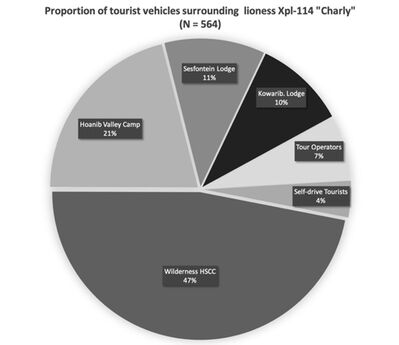Factors contributing to the fatal attack of an experienced tourist by a well-known lioness in the heart of the Hoanib River.
Thursday 12 June 2025
During the night of 30 May 2025, the adult lioness, Xpl-114 “Charly”, attacked and killed Mr Bernd Kebbel, a long-term supporter and friend of the Desert Lion Conservation Trust.
30 May 2025 was a fateful night. A night of shock. That sent ripple effects spreading to the far corners of the globe. A night that fundamentally changed the lives and futures of families & friends, and the remaining Floodplain lions. That will hopefully bring about change to the currently un-sustainable tourism activities in the Hoanib River.
Mr Bernd Kebbel
The Desert Lion Conservation Trust extends its deepest sympathies and condolences to the family of Bernd Kebbel, his wife, and their two children, who shared his profound love and respect for nature. The Kebbel family are avid outdoors enthusiasts. Their appreciation for breathtaking landscapes and their enjoyment of wildlife are infectious.
During the early days of the Desert Lion Conservation project (pre-2010), there was a silent donor that always stepped in whenever we experienced problems, like a vehicle breakdown or the urgent need for a GPS or satellite radio collar. This support was invaluable in keeping the research and monitoring programmes going. It was only years later that we learned that the silent supporter was Bernd Kebbel.
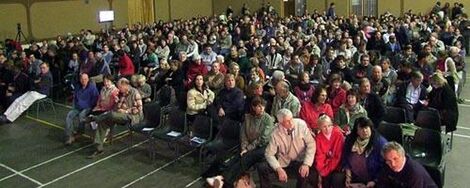
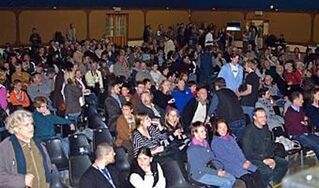
During 2013 the Kebbel family became devoted supporters of the Desert lions. They solicited support to arrange and host a Desert Lion Conservation presentation at SKW in Windhoek that was attended by +650 people.
Bernd and Connie also designed & managed a very successful initiative of selling individually numbered DLC caps. The funds generated from these donations contributed to the purchase of a satellite radio collar.

During the latter part of 2013 when DLCT received a new research vehicle, the entire solar electrical system was sponsored and installed by Off-Road Centre, owned by Bernd Kebbel.
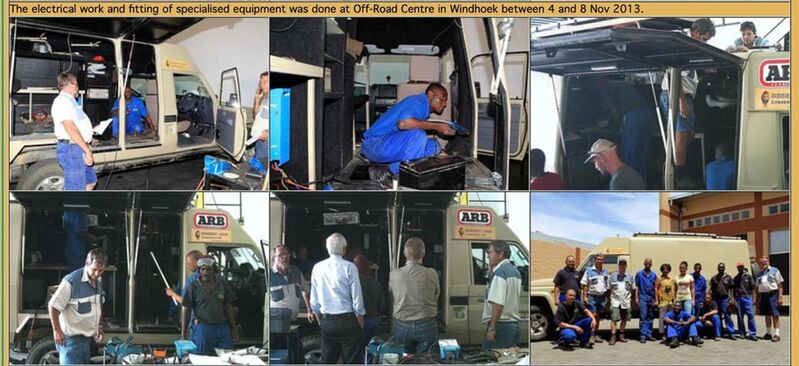
In honour of all this support a spectacular black-maned lion, that roamed the Hoanib River between 2007 – 2017, was named Xpl-81 “Kebbel”.
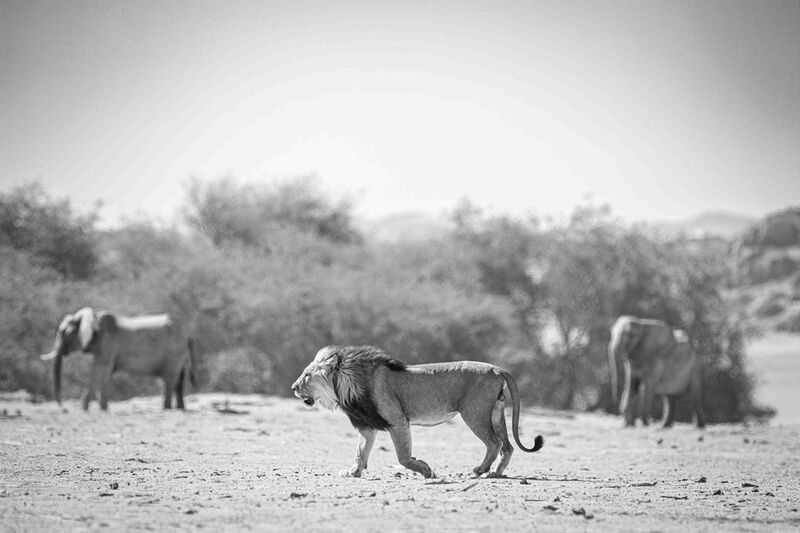
The adult male Xpl-81 “Kebbel”
Xpl-114 “Charly”
The lioness and her two sisters (Xpl-106 “Alpha” and Xpl-109 “Bravo”) were born during November 2015 into the Hoanib Floodplain pride. They have been the subjects of a long-term intensive behaviour ecology study. Xpl-114 “Charly” has been observed for her entire life and was 9.5 years old. Her home range covered the lower Hoanib River and centred around the Wilderness Hoanib Skeleton Coast Camp (WHSCC).
Second only to Desert-adapted elephants (who suffer from the same tourism pressure), the Floodplain lions are enormously important to tourism in the Hoanib River. Xpl-114 “Charly” was most likely the single most valuable tourism asset of the Hoanib River, for the past 4 years.
Her presence has been a significant feature in several internationally acclaimed wildlife films, with the latest, “Lions of the Skeleton Coast,” earning a nomination for a 2025 Emmy Award. Xpl-114 “Charly” was arguably the most photographed and Internationally well-known free-ranging lioness in the whole of Namibia.
She gave birth to two litters of cubs, but failed to raise them beyond the critical first 8 weeks.
Sustainable Lion Tourism
Desert Lion Conservation conducted research on the lion population for +30 years, with a key research focus aimed at measuring the impact of regular tourism on the behaviour of lions, and to determine a sustainable level that maximises the value of lion observations by tourists and does not impact the lions negatively.
When the first Lodges were built in the Hoanib River, Desert Lion Conservation worked closely with the tour operators to develop the procedures for high quality sightings that are safe and sustainable.
Over a 20-year period we delivered close to 100 comprehensive audio-visual training courses to several hundred guides and tour operators. Together with the Lodges and tour operators & local MET staff, we developed safety protocols for approaching & viewing lions. Additional protocols were also made for off-road driving and safety procedures when lions enter the Lodge area and around tourist / staff accommodation (see attached).
PDF – Roads & PDF - Camp safety
The shutdown of tourism during the Covid-19 Pandemic provided a perfect experimental platform to compare the behaviour of lions in relation to the absence or presence of tourism. When tourism eventually returned, there was a visible reaction by lions. Initially they appeared nervous at approaching vehicles and sometimes moved away. Refresher training courses were provided to guides and tour operators, and the protocols of approaching and viewing lions were revisited (see below). And within a few weeks, lions became habituated again and tolerated the approaching tourist vehicles.
The subsequent four years following the Covid-19 break, was marked by a visible change amongst tour guides in attitude and approach to the profession. They appeared less respectful, more aggressive in their approach, and less in-line with the mission-statements of their employers. The main tour operators in the Hoanib River all have strong conservation messages and their marketing profiles all boast about participation and contributions to conserving the wildlife and habitat of their tourism concession areas. These philosophies did not, however, filter down to their employees (the guides) that drive the paying clients through the landscape to view lions and other wildlife.
Despite refreshing training courses and revisiting/improving the protocols, there was a rising disregard for following protocols, providing feedback on sightings, and most alarming the loss of respect by driving ever closer to the lioness.
Alarmed by this trend that was exacerbated by an increase in tourism volume and number of vehicles, Desert Lion Conservation Trust issued numerous warnings to the Lodges and their senior management structures. In addition, we collected data on the activities of game-drive vehicles in relation to the lioness by using remote sensing, WiFi cameras and spoor reconstructions.
Over a two-year period (2024-2025) when Xpl-114 “Charly” was in the area of the President’s waterhole, the majority (69%) of the vehicles surrounding and viewing the lioness were from the two main Lodges in the Hoanib River (see graph).
The average distance measured between the lioness Xpl-114 “Charly” and the closest vehicle was an alarming 10.6 metres (range: 2 – 34 m, N = 57). The number of vehicles viewing or occasionally even surrounding the lions ranged between 2 and 12 vehicles. Preliminary analysis of hunting success suggests that the presence of tourism vehicle had a negative effect on the diurnal hunting success of the lioness Xpl-114 “Charly”. During 24 occasions when Xpl-114 “Charly” hunted prey with >4 tourist vehicles present, the hunts were all spoiled by presence of the vehicles. This is an important form of disturbance. Wildlife and potential prey animals (gemsbok, springbok & ostriches) only utilises the Hoanib ephemeral riverbed during the daylight hours. With the presence of tourism vehicles around the lioness every morning and every afternoon, it is to be expected that her hunting success will be compromised.
The main and most important aspects of the protocols that were being broken:
- The ABSOLUTE MINIMUM DISTANCE that a vehicle is allowed to approach a lion is 50 meters. Lions may often move closer towards the vehicles.
- Speak softly and in a low tone – lions do not like the sound of human voices.
Our complaints to the tour operations managers persisted, and even though everyone agreed, no changes were ever implemented. It seemed as though the “Guides” had become rogue, disregarding their employer’s instructions / requests.
The process was gradual as vehicles drew nearer. Day after day, the lioness found herself surrounded by game-drive vehicles that gradually encroached on her. Over time, she became accustomed to the ever-presence of the cars and the incessant chatter of the people, who occasionally spoke loudly and without regard for her.
These actions resulted in an unnaturally high level of habituation, causing the lioness to lose all her natural fear and respect for vehicles and people. During the month of May several incidents were reported where the lioness approached vehicles and campsites.
Xpl-141 “Charly” returning to the same campsite during the following night. Due to a strong wind, a log from the original fire, began smouldering and small flames became visible. It is at that time that the lioness approached the fire & campsite. Her behaviour towards the Research vehicle, however, was unchanged.
On the fateful night Xpl-114 “Charly” was lying next to the vehicles and the smouldering fire, and even though she was lean & hungry, the events that followed were well within the bounds of normal lion behaviour and hunting opportunism. The habituation and imprinting caused by the game-drive vehicles disarmed her from the instinctive knowledge and respect she was born with.
No single person or even a group can be blamed, but collectively, we that have the privilege of working or guiding in the Hoanib River, all carry some responsibility. Either through our disrespectful actions, or by our silence or inaction, or by our failure of imagination.
Namibia, the Hoanib River, the Lodges, all the tourists, and the dwindling desert-adapted lions have lost a legend.
Desert Lion Conservation Trust


